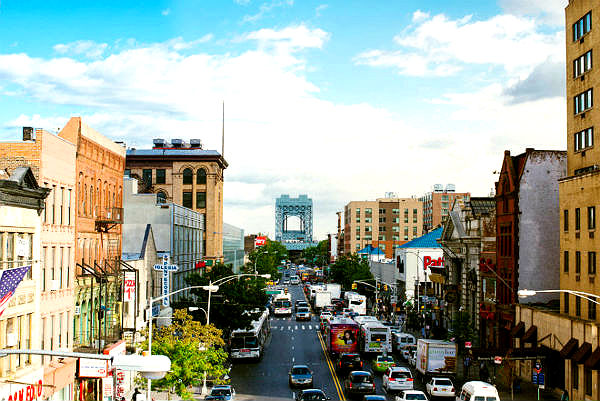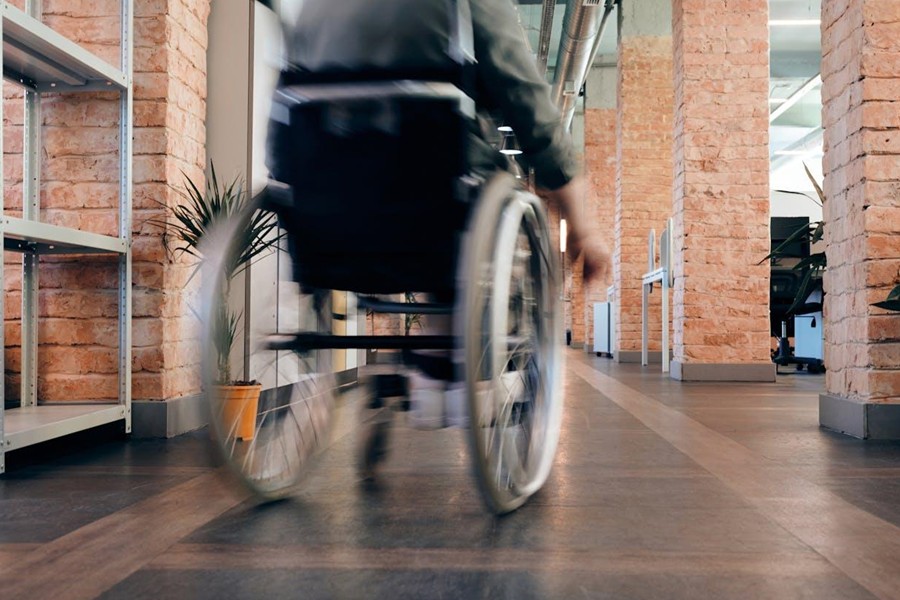 The Health Department today announced a new initiative to educate primary care providers about naloxone – the medication to reverse an opioid overdose. Health Department representatives will visit at least 800 primary care clinicians from October to December to encourage them to offer naloxone to patients at risk of an opioid overdose and those who have at-risk friends or family members. Targeted neighborhoods will include, but are not limited to: the Rockaways in Queens; Hunts Point-Mott Haven in the Bronx; East New York in Brooklyn; East Harlem in Manhattan; and Stapleton-St. George in Staten Island. The Department’s previous naloxone detailing campaign in March and April reached more than 1,000 independent pharmacies. This campaign is a part of HealingNYC, the City’s comprehensive strategy to save up to 400 lives by 2022.
The Health Department today announced a new initiative to educate primary care providers about naloxone – the medication to reverse an opioid overdose. Health Department representatives will visit at least 800 primary care clinicians from October to December to encourage them to offer naloxone to patients at risk of an opioid overdose and those who have at-risk friends or family members. Targeted neighborhoods will include, but are not limited to: the Rockaways in Queens; Hunts Point-Mott Haven in the Bronx; East New York in Brooklyn; East Harlem in Manhattan; and Stapleton-St. George in Staten Island. The Department’s previous naloxone detailing campaign in March and April reached more than 1,000 independent pharmacies. This campaign is a part of HealingNYC, the City’s comprehensive strategy to save up to 400 lives by 2022.
The Health Department will distribute free naloxone for New Yorkers at today’s Queens City Hall in Your Borough Resource Fair at Borough Hall in Kew Gardens. Last year, 270 residents of Queens died from drug overdose. Rates of overdose death were highest among Queens residents ages 35 to 54, as well as among White residents of the borough. Fentanyl was the most common drug, involved in 54 percent of overdose deaths in Queens. The three Queens neighborhoods with the highest rates of overdose death in 2017 were: Ridgewood, the Rockaways, and Fresh Meadows.
“Naloxone saves lives, so we want more clinicians in high-risk communities to diagnose patients at risk of an opioid overdose and prescribe naloxone,” said Acting Health Commissioner Dr. Oxiris Barbot. “And, as part of City Hall in Your Borough in Queens, we encourage residents of the Rockaways to come out tomorrow for a free naloxone kit. Overdose deaths are preventable.”
“Harm reduction efforts are critically important in response to the opioid epidemic. Naloxone prevents overdose deaths, gives people a chance to turn their lives around, and is safe and easy to administer. The Health Department is right to vigorously expand access to naloxone and provider education programs in communities with elevated rates of overdose deaths,” said Assembly Member Richard N. Gottfried of Manhattan, Chair of the Assembly Health Committee.
“In the moments after an opioid overdose, the only thing standing between that individual and death is naloxone. It is vital that every community, particularly those at highest risk, be blanketed with naloxone, and offices of primary care physicians are a fantastic distribution point for information and access,” said Assemblymember Linda B. Rosenthal (D/WF- Manhattan), Chair of the Assembly Committee on Alcoholism and Drug Abuse. “We know the blueprint for saving lives and reversing overdoses in New York. Naloxone needs to be within reach in every community in New York State.”
“The opioid epidemic continues to be a major issue for communities across New York City and while we work to identify and address the systemic factors that contribute to more cases of abuse, it is critical that we as a City step up to save every life we can,” said Council Member Donovan Richards, chair of the Committee on Public Safety. “I’d like to thank Health Commissioner Barbot for her commitment to working with primary care physicians in the Rockaways to ensure they receive free naloxone kits to prescribe to those in need.”
“It is imperative that the city does everything in its power to ensure those struggling with opioid addiction receive treatment and care instead of punishment and incarceration,” said Council Member Rory I. Lancman. “Connecting people in need with assistance is only possible through education and outreach. I commend the Health Department for launching this important initiative today to enable more primary care doctors to learn about naloxone and better understand how to identify at-risk patients.”
“With the rate of opioid overdose doubling in the last eight years, it is important that the NYC Department of Health and Mental Hygiene is moving to equip healthcare providers with the knowledge they need to keep New Yorkers safe,” said Council Member Barry S. Grodenchik.
As part of the detailing campaign, primary care providers will learn to:
- Identify patients at risk of an opioid overdose.
- Offer naloxone by prescribing or referring to a pharmacy or registered Opioid Overdose Prevention Program.
- Educate patients on overdose risk and how to use naloxone.
- Inform about the New York State Naloxone Co-payment Assistance Program, which covers co-payments of up to $40 for naloxone.
- Use and promote the Health Department’s free Stop OD NYC app, which provides information on how to recognize and respond to an overdose and how to access naloxone.
The Health Department has conducted three detailing campaigns encouraging clinicians to prescribe opioids judiciously – the lowest effective dose for the shortest possible duration. Past campaigns in Brooklyn (2017), the Bronx (2015) and Staten Island (2013) together reached nearly 3,000 prescribers. Evaluations of all three campaigns found increases in provider knowledge of judicious prescribing; in Staten Island, greater community-level decreases in high-dose opioid prescribing were attributed to the campaign.
All major chain pharmacies (Walgreens, Duane Reade, Rite Aid and CVS) in New York City now offer naloxone, and over 600 independent pharmacies citywide have agreed to dispense the medication without a patient-specific prescription.
Opioid overdose deaths are preventable, and naloxone is available to all New Yorkers who need it. All major chain pharmacies (Walgreens, Duane Reade, Rite Aid and CVS) in New York City now offer naloxone, and over 600 independent pharmacies citywide have agreed to dispense the medication without a patient-specific prescription. In addition to access through pharmacies citywide, naloxone is available for free from registered Opioid Overdose Prevention programs. Additionally, New York State will cover co-payments of up to $40. At its main office in Queens, the Health Department offers regular naloxone trainings, which teach New Yorkers to recognize the signs of an overdose and respond by calling 911 and administering naloxone. The trainings are free, and all participants are offered a free naloxone kit.
In New York City, someone dies of a drug overdose every six hours. In 2017, there were 1,487 confirmed overdose deaths; opioids were found in 82 percent of those deaths. Fentanyl, a potent and short-acting opioid, was the most common drug, involved in 57 percent of overdosed deaths. From January to March 2018, there were 360 confirmed drug overdose deaths in New York City. The number of drug overdoses remains at epidemic levels as illicitly manufactured fentanyl, a potent opioid, continues to be present in the drug supply. Fentanyl has been found in heroin, cocaine, methamphetamine, and ketamine, as well as in benzodiazepines and opioid painkillers acquired from non-pharmaceutical sources.
In New York City, someone dies of a drug overdose every six hours. In 2017, there were 1,487 confirmed overdose deaths; opioids were found in 82 percent of those deaths. Fentanyl, a potent and short-acting opioid, was the most common drug, involved in 57 percent of overdosed deaths. From January to March 2018, there were 360 confirmed drug overdose deaths in New York City. The number of drug overdoses remains at epidemic levels as illicitly manufactured fentanyl, a potent opioid, continues to be present in the drug supply. Fentanyl has been found in heroin, cocaine, methamphetamine, and ketamine, as well as in benzodiazepines and opioid painkillers acquired from non-pharmaceutical sources.
Individuals seeking support or treatment for themselves or their loved ones can contact NYC Well by calling 1-888-NYC-WELL, texting “WELL” to 65173 or going to nyc.gov/nycwell. Free, confidential support – as well as guidance on where to obtain naloxone – is available at any hour of the day in over 200 languages.
If you witness an overdose, call 911 immediately.
Become a Harlem Insider!
By submitting this form, you are consenting to receive marketing emails from: Harlem World Magazine, 2521 1/2 west 42nd street, Los Angeles, CA, 90008, https://www.harlemworldmagazine.com. You can revoke your consent to receive emails at any time by using the SafeUnsubscribe® link, found at the bottom of every email. Emails are serviced by Constant Contact








